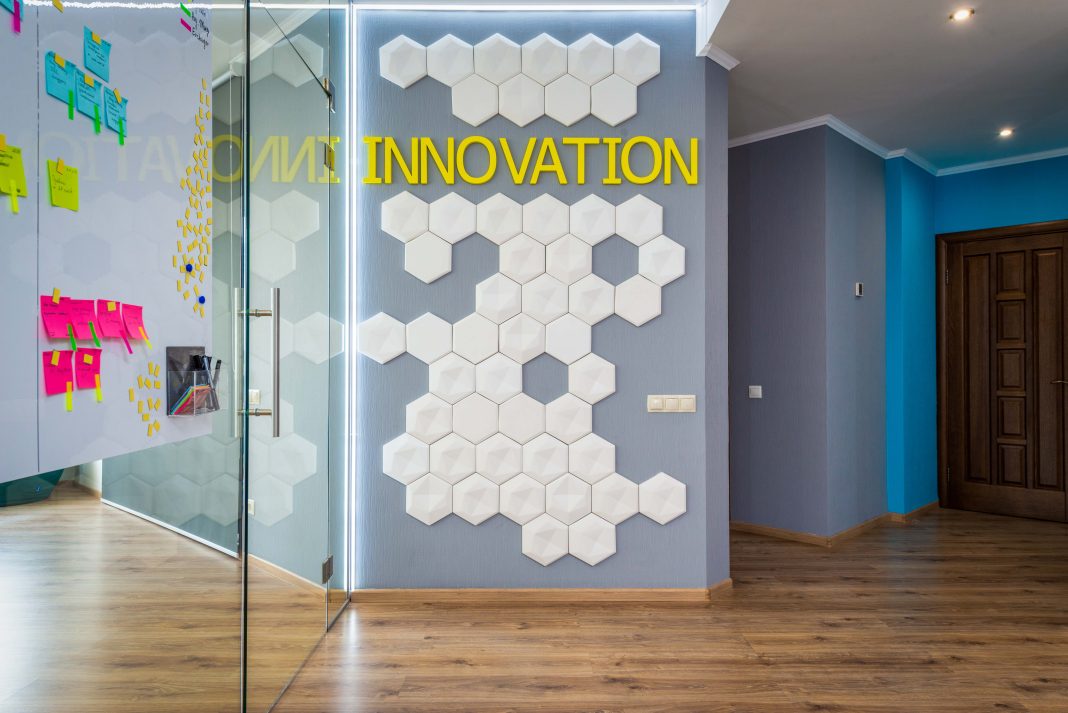With so many properties failing to meet contemporary energy efficiency standards, much needs to be done to save occupants from needless discomfort and expense. There are plenty of mainstream retrofit concepts, but what about something different? CityChangers.org takes a sideways look at how you can innovate retrofitting to heat, cool, and power your home. And we touch on some nifty ideas for kitting out a future-proofed office, too.
If the word ‘innovation’ summons images of boffins and whirring, clicking, brightly lit gadgetry, you might be surprised to learn that emerging fabric-first solutions offer intriguing ways to save our homes, workplaces, and heritage assets from dilapidation. Like with conventional projects, knowing how to innovate retrofitting is not so much about being radical, but rather about behaviour and defining your approach.
Getting to the Roof of the Problem
You’ve heard of green roofs, living roofs, and black roofs. What about cool roofs?
According to the Cool Roof Rating Council, this is a rooftop (unsurprisingly) made from a light-coloured, reflective (e.g., metallic) substance. It both rebounds and releases solar and infra-red heat back into the atmosphere. It doesn’t capture and spread direct heat into the property like a conventional roof, typically the hottest place of a building.
Amazingly, temperature of these roofs can be as much as 33°C cooler. In warmer climes, and after initial any material and installation charges, this provides an ideal, cost-free alternative to air con. Although the buildings sporting them may require a tad more heating when winter bites, some products actively send the sun’s heat back out into space, lowering the overall global temperature!
Simple Solar
A roof is exactly what you need for solar panels. Great for homeowners, not so much for people living below the top floor of an apartment block.
Until now. Solmate from the Austrian company Efficient Energy Technology GmbH is a lightweight, unintrusive out-of-the-box panel that hooks over the side of a balcony. It’s easy to assemble: plug it in the storage battery, connect to the mains, and it pumps power back into your home – and only your home – on demand.
Another new development is Building Integrated Photovoltaics (BIPV). This is essentially the same as any standard solar panel in function but built to look like tiles. Great for cities with building codes that protect particular aesthetics. One day we may even be able to power buildings charged by the bricks they’re made of.
Virtual as a Reality
Don’t forget the accessories! Electric vehicle charging stations are popping up everywhere. Most draw from the electricity grid, but some, like the zappi, can be fed by solar.
Siddharth Sareen, Associate Professor in Energy and Environment at the University of Stavanger, told CityChangers.org that batteries that outlive their use for EVs can be recommissioned to power properties. That’s what Nissan are doing with their recycled Second Life LEAF batteries.
A grid of solar panels can supply electricity to public buildings as part of community energy schemes, but also act as an alternative to a centralised power plant. Virtual solar, as it’s known, is taking hold in Australia. Single story houses often sport PV units to exploit the region’s intense sunshine; rather than generating only their own electricity, it’s a pool that feeds the grid, reducing widespread demand for and reliance upon fossil fuels.
Sid mentions how Europe is piloting a scheme tested by NYSERDA in Brooklyn, New York, which offers virtual solar instead of subsidises for individual retrofits. He adds: “It’s helping the low-income households that you want to target to help out of energy poverty.” Innovation as a tool for equity.
Keeping Cosy
Wood is a renewable resource. For this reason, wood burners have become trendy as a carbon neutral way of heating homes. Energy saving advice portal TheGreenAge argues the case for biomass boilers – the larger wood pellet burning cousins of old-fashioned water heaters – for their cheaper fuel source. Plus, the ash can be used as compost.
However, both options omit carbon and particulates that aggravate respiratory illness. Wood burners produce many more of these than the vehicles on our roads do!

Instead, for a consistent heat throughout your rooms, consider underfloor options. This works at a lower temperature than space heating and is therefore 40% more efficient than radiators. Combined with a heat pump, this can be a very sustainable option, but easier to install in new builds than existing ones. In retrofits, laying electronic wires underfoot is more convenient.
There are pros and cons to underfloor heating, of course. It’s relatively cheap to integrate, at around £25 (€29) per square metre. Sourcing the warming energy from solar panels can save costs, protect consumers from electricity price fluctuations, and benefit the environment. However, retrofitting an entire floor system is quite the overhaul – it’s disruptive and takes time. Plus, screed – a concrete mix – is often the recommended material for the floors these systems heat; this is a major contributor to global carbon emissions.
Q-bot, Draw Back Your Bow
If you’re walking on suspended timber floorboards, there’s a chance you’re losing 20% of heat due to rising draughts. Repairs or replacements aren’t always an affordable or attractive option. Q-Bot could help.
Without the need to lift the floorboards, the robot – resembling a remote-controlled car – drives around the crawl space spraying insulation on the underside. According to the website, Q-Bot can “improve the fabric of homes” to reduce carbon emissions via an “innovative and sustainable retrofit solution”. By offering an inexpensive and quick improvement to heat-sapping suspended flooring, it “will have a significant impact on fuel poverty reducing energy bills by an average of £125” each year.
Infra-red Heaters
Heating usually works through convection: radiators warming the air around them, this rises for cooler air to rush in its place also to be warmed.
Infra-red offers direct warmth. Think of how the sun feels on your skin – that’s the infra-red effect. Infra-red heaters warm surfaces, which in turn heat the surrounding air, too. It’s not lost to cold walls and furniture as these are warmed surfaces. For the same level of comfort of traditional radiators, heating costs are around a quarter. Being made of flat wall- or ceiling-mounted panels, they also free up a lot of space.
A Policy Approach
Olamide Oguntoye from the Tony Blair Institute for Global Change writes that carbon pricing as a punitive measure is an unreliable motivator. Instead, we should “support investment based on the potential of emission reduction, feasibility and the potential to catalyse further innovation”.
That’s what Denver in the USA has done. The city has announced investment in a building decarbonisation incentives manager. Residents voted in favour of a 0.25% sales tax to create a Climate Protection Fund, which will bankroll the position and the greenhouse gas-busting initiatives it proposes. Whether the planned electrification of building operational functions is deemed innovative or not, citizen buy-in, and the proactive approach to funding and establishing a first-of-its-kind role to lead on the decarbonisation commitment, is an inspiration for retrofit programmes everywhere.
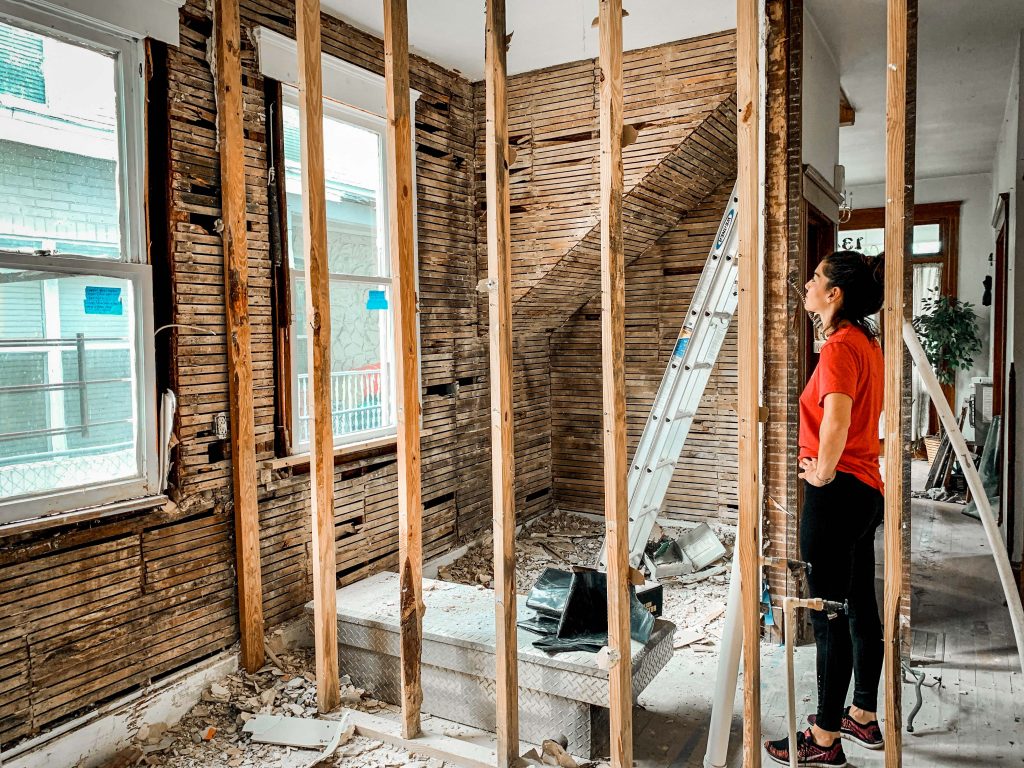
Space it Out
Thanks to the coronavirus pandemic, ‘social distancing’ has become a staple of our daily lives. The New Buildings Institute’s guidance calls for “minor” adjustments to create space and the installation of touch-free shared facilities in non-residential retrofits. This includes keyless doors and touchless taps in workplaces. The guidance also claims people want to work from home only half the week; we can create a safe, distanced environment by removing half the desks and working in the office on a rota basis. To help keep track of these shallow retrofits, the NBI has published a helpful checklist.
Like it or loathe it, we are working from home more, but our apartments didn’t expand to accommodate this function. We can account for this during the retrofit process. Vicky Saunders of BTP Architects says it all starts with a spatial assessment. “For example,” Elsa Court writes in their interview for the Financial Times, “could you free up space taken by an existing kitchen or bathroom by choosing smaller units?”.
Vicky tells us to view living spaces more flexibly: “A kitchen counter can work efficiently as a breakfast counter and computer station, if you can route in the plugs”. As with all good renovations, especially where electrics are concerned, planning prior to commencing the work is of utmost importance.
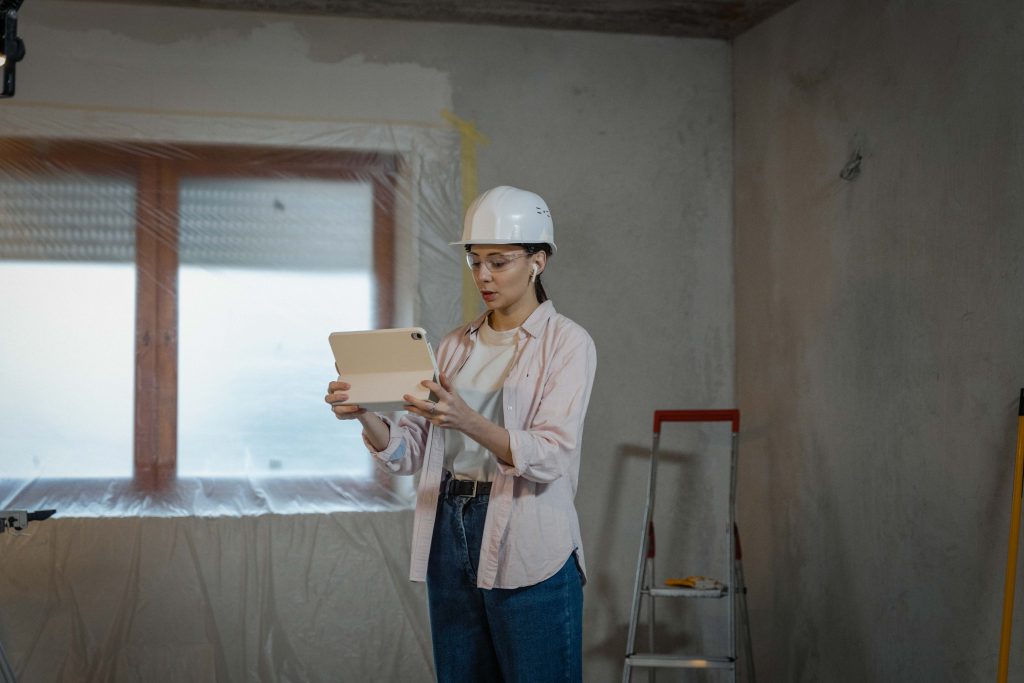
Innovative Offices
There are ways we can improve efficiency in how we use space and energy in the workplace. The following concepts subvert the need for interruptive, expensive construction that uses problematic materials such as concrete.
Wall, I Never!
Vicky Saunders suggests that living quarters can become temporary office space with the use of moveable walls. These “are best integrated into new builds,” but what if that’s not possible?
Air walls offer a solution, and not just for home. Offices, factories, and events all use them. Whether sliding into position on rails, freestanding panels, or inflatable, they can be used to create, resize, and reshape rooms to fit requirements.
From Insulation to Isolation
Open plan offices, once de rigueur, are now recognised as the noise-filled, concentration-busting vacuums of productivity that they really are. But someone in HQ wanted it that way, so you’re stuck with it! What can you do?
Well, a soundproof pod is a decent start. These noise-cancelling isolation booths save you from the distraction of ambient mumblings. Big names like Framery and Hushoffice offer units that accommodate one person up to large teams, equipped for remote conferencing, of course. And if you want to shame colleagues prone to spouting idle tittle-tattle on their mobile devices, send them off to a purpose-built sound-filtering telephone room.
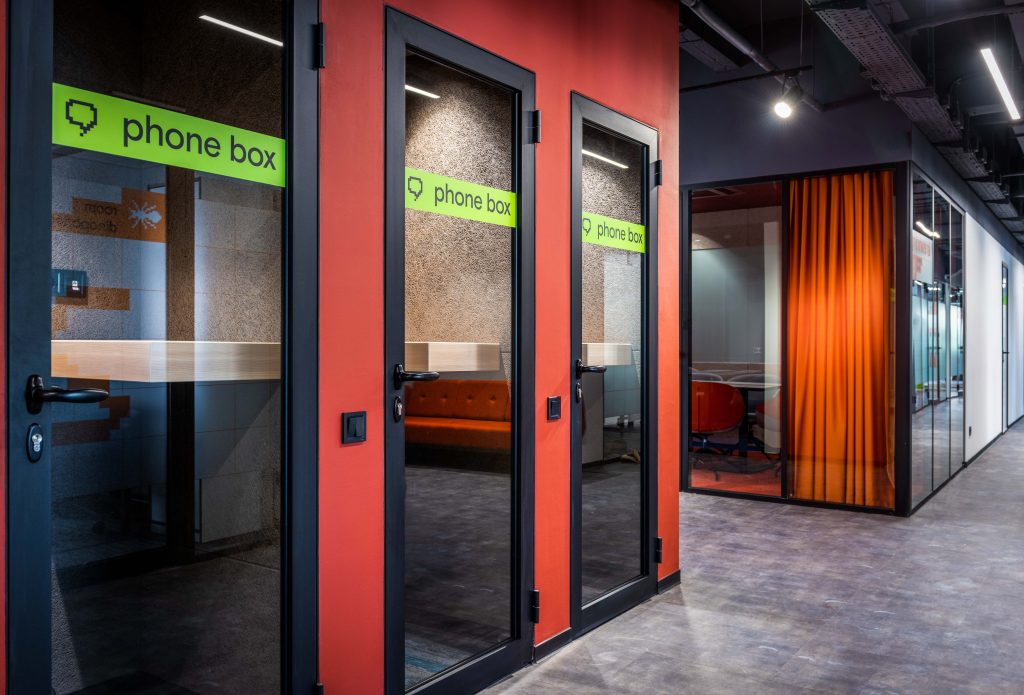
Image credit: Pexels / Max Vakhtbovych 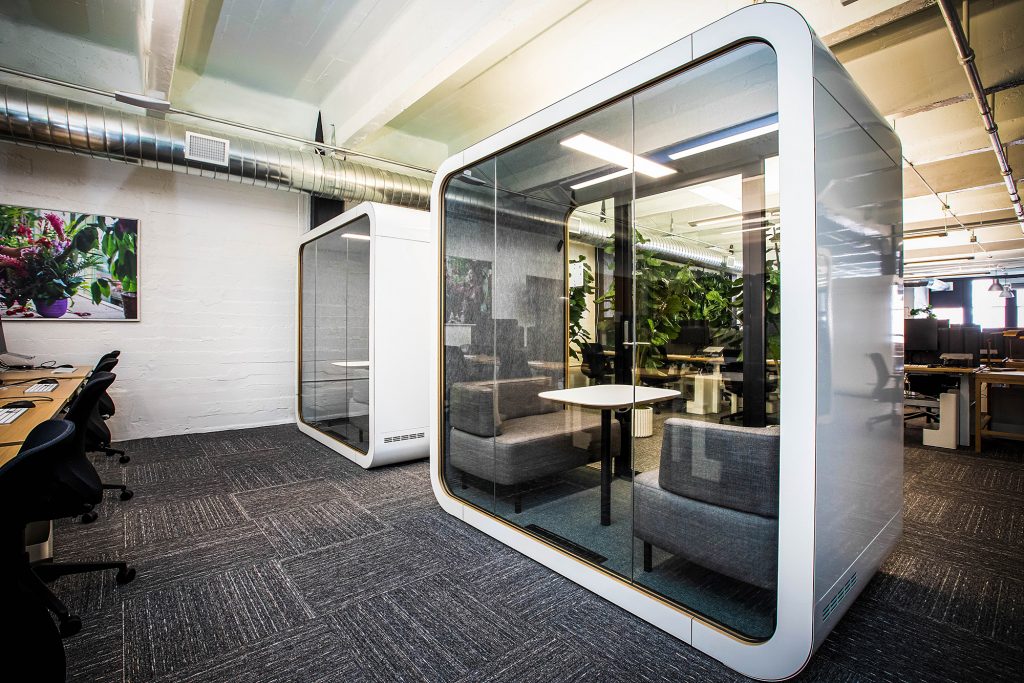
Image credit: Unsplash / Uneebo Office Design
How to Innovate Retrofitting in a Nutshell
While many may imagine innovation to take the form of smart technology, what we’ve discovered is that foresight, materials suited to the microclimate, and new approaches to room layouts are effective steps forward. A city administration and citizenship invested in mitigating climate change can club together for a new approach to the persistent issues: carbon emissions, fuel poverty, and expensive, disruptive deep retrofits. And lastly, it’s worth remembering that not all solutions have to be permanent. In fact, the more flexible we can be, the more resilient we can be to an unpredictable changing climate.

